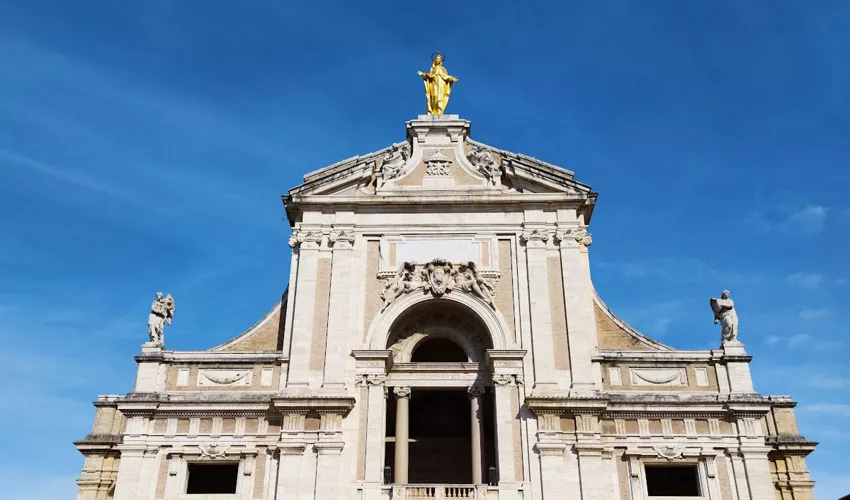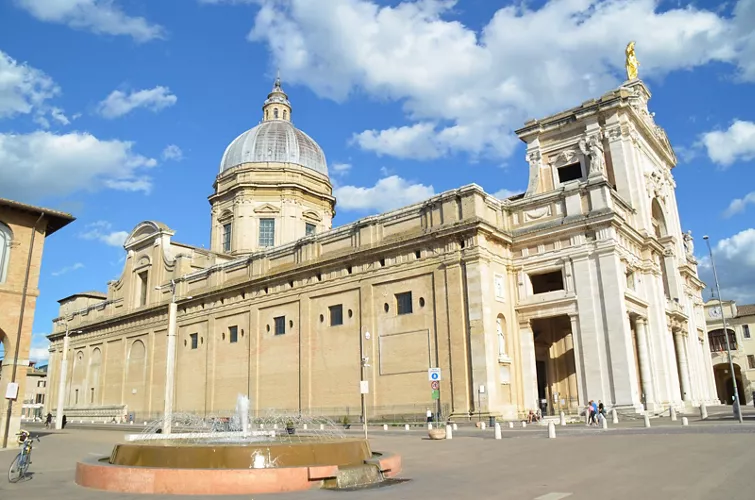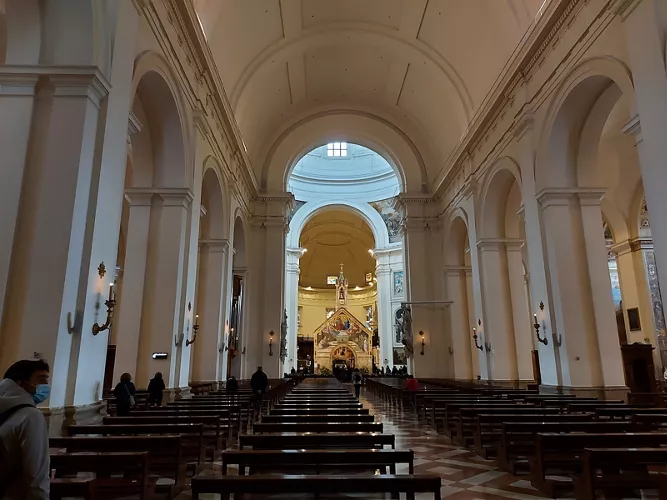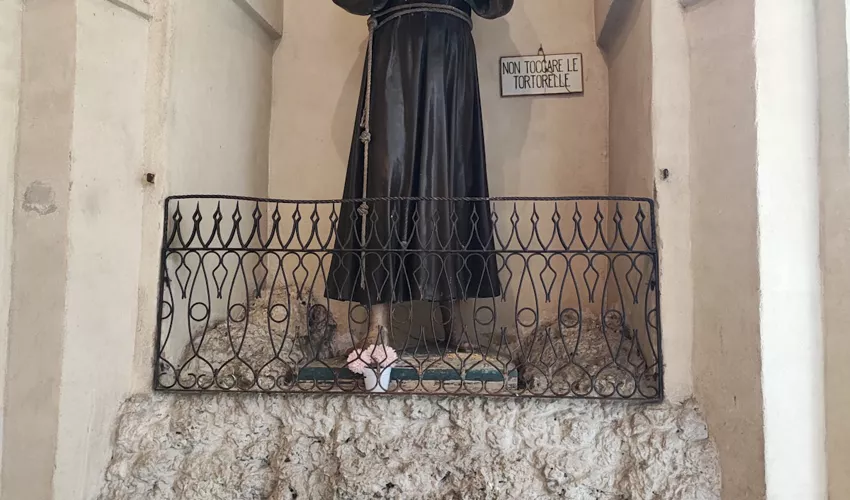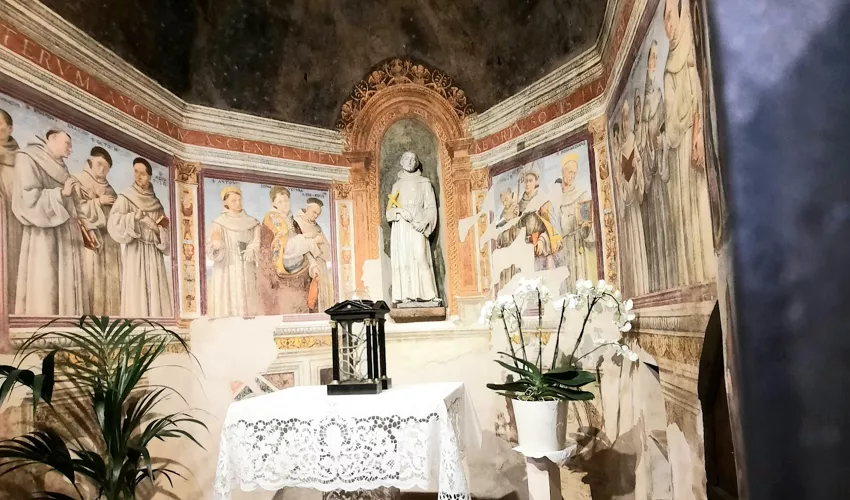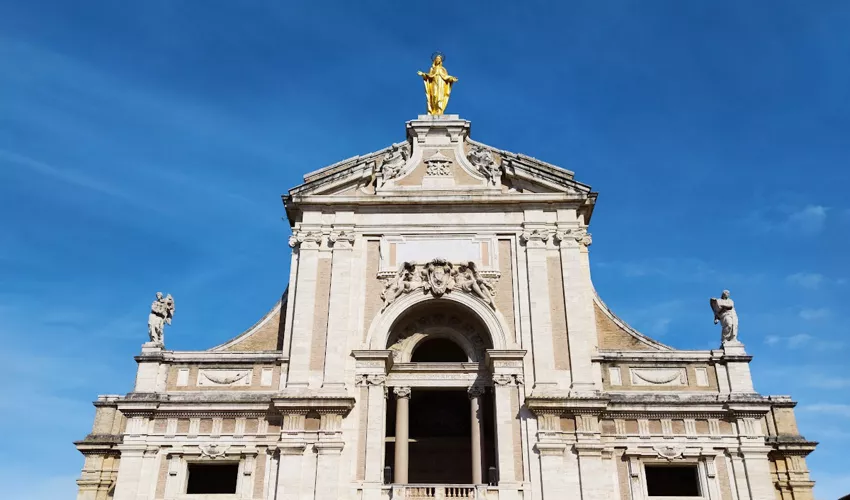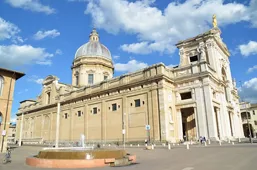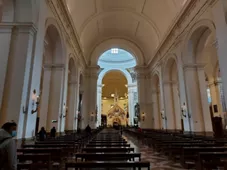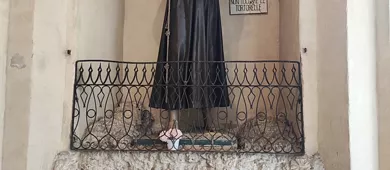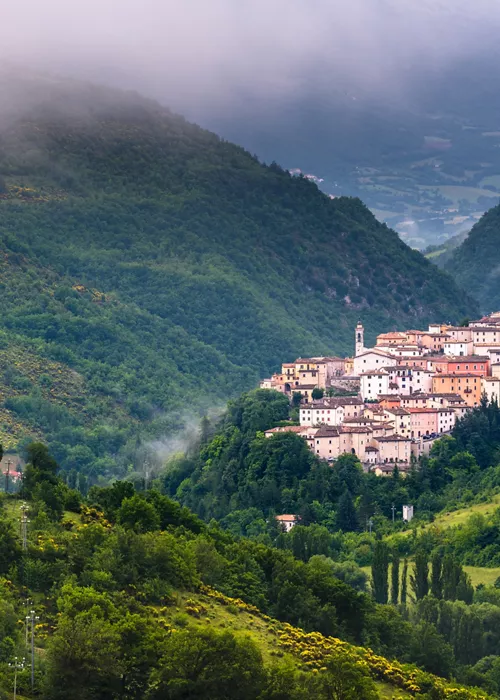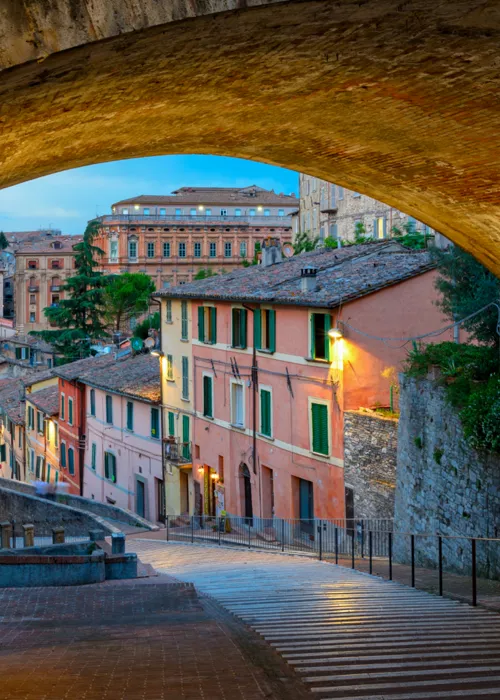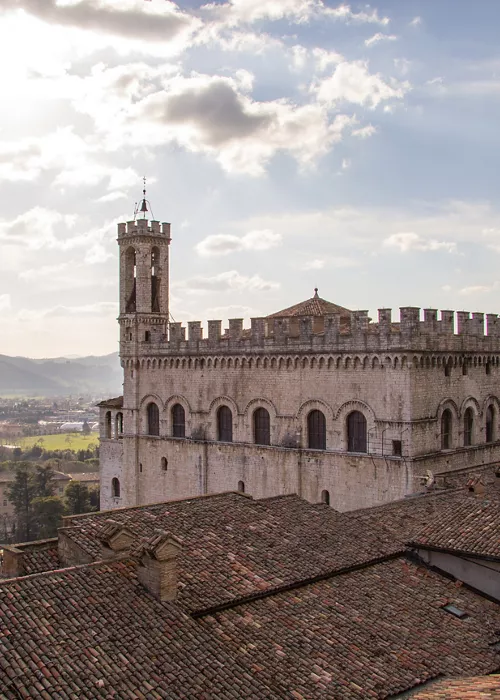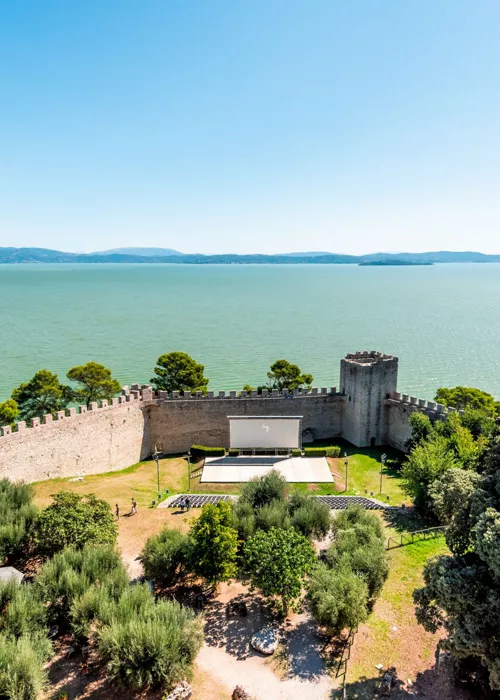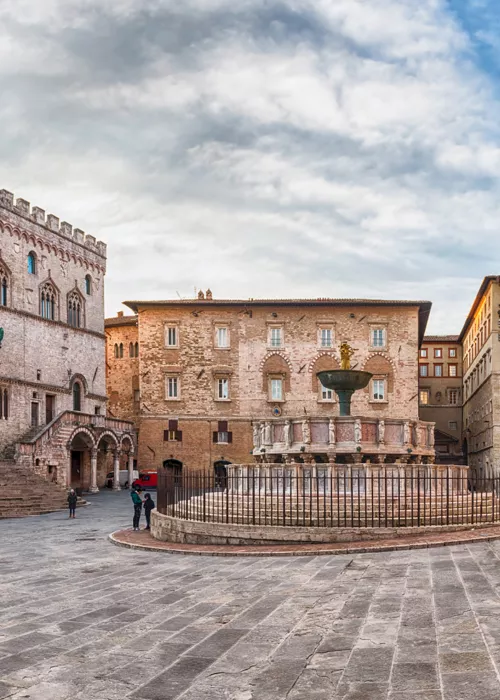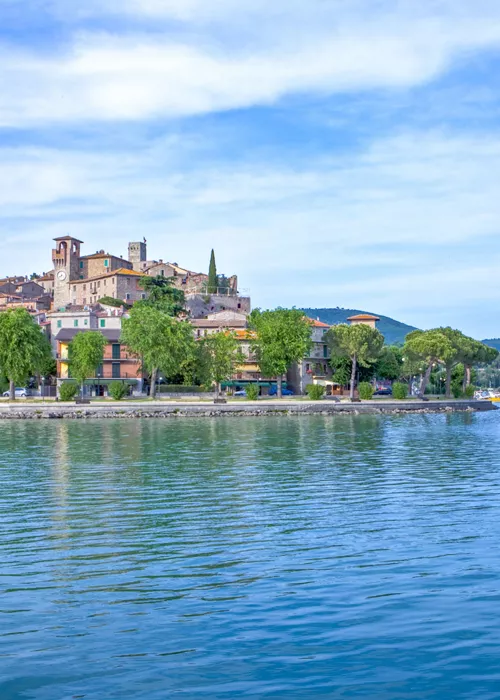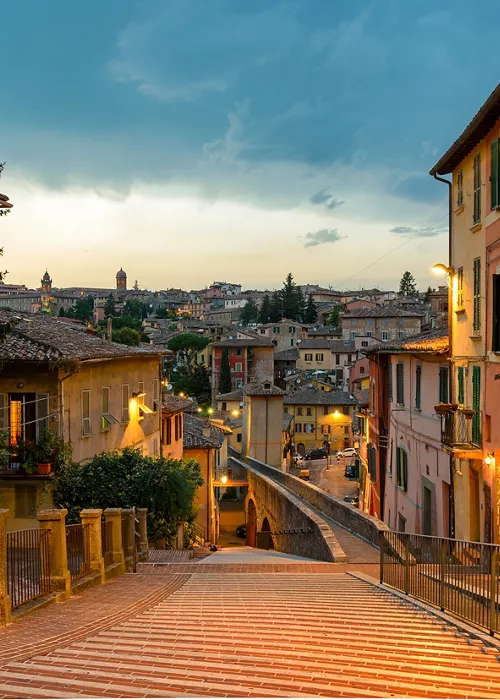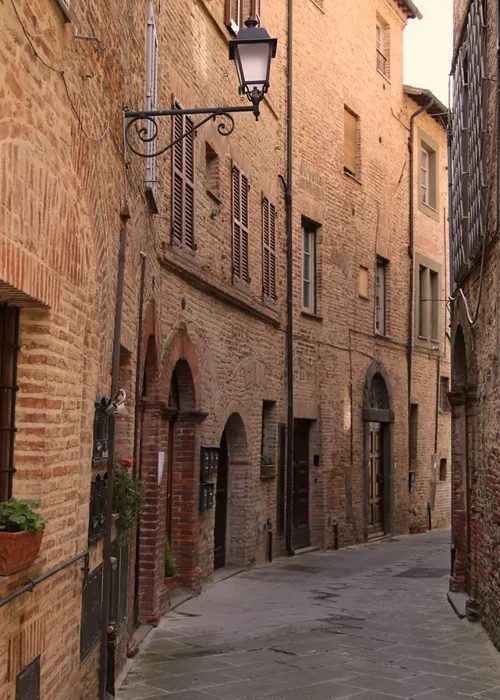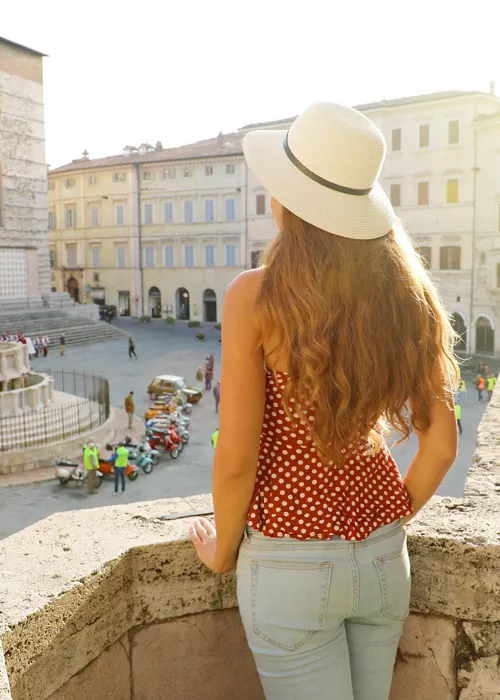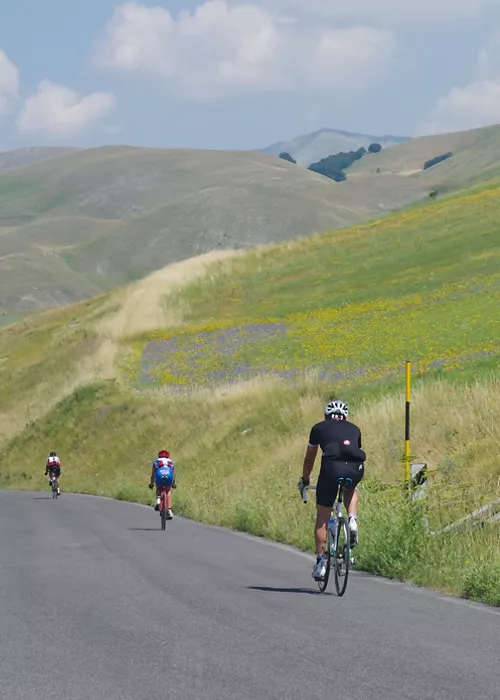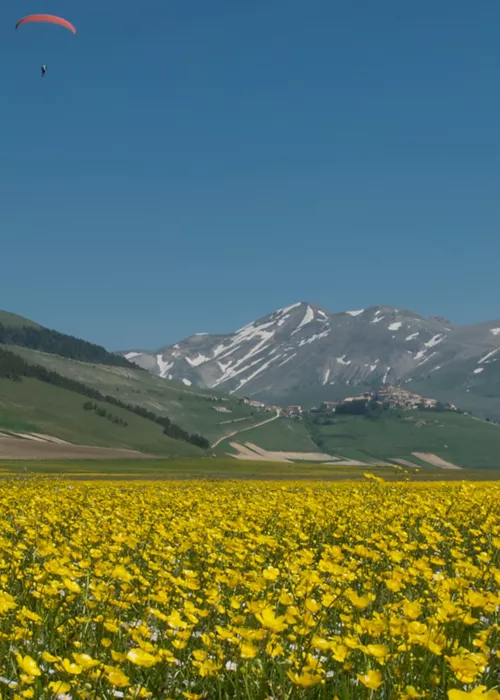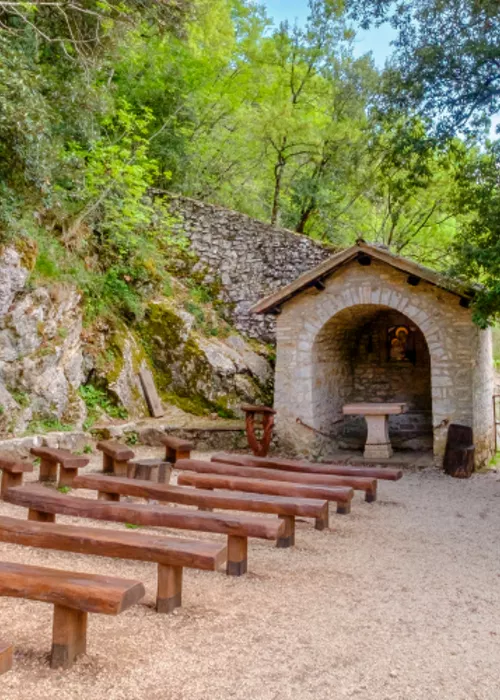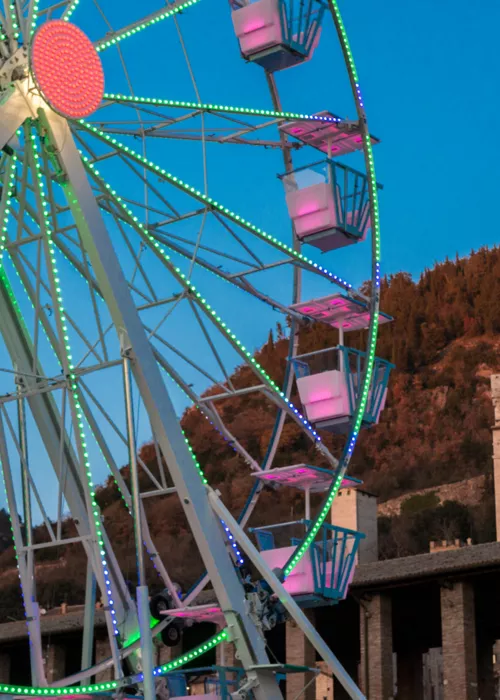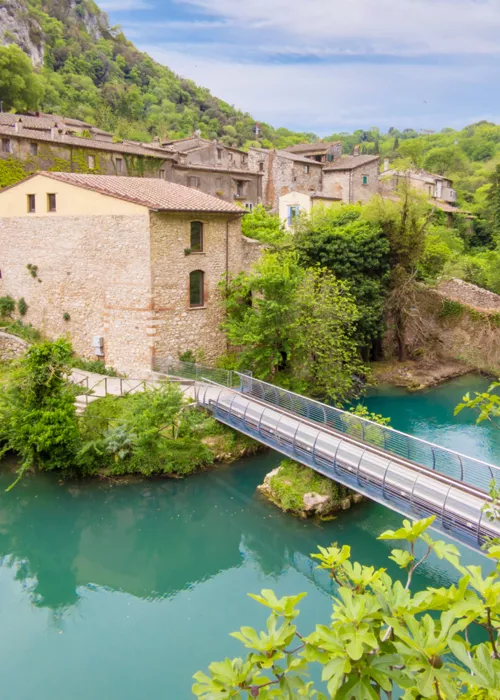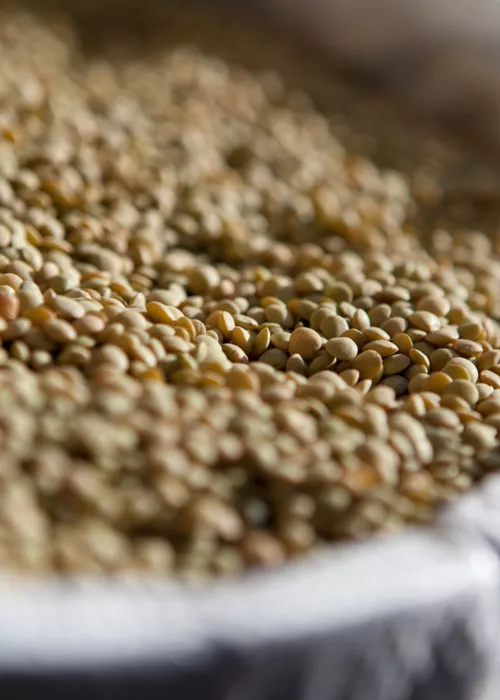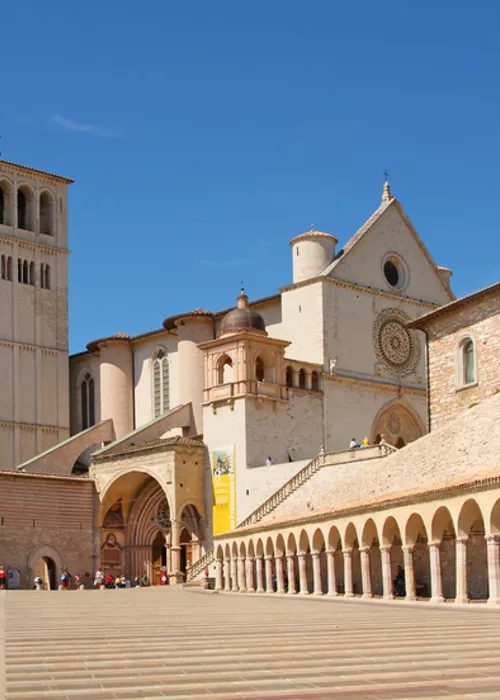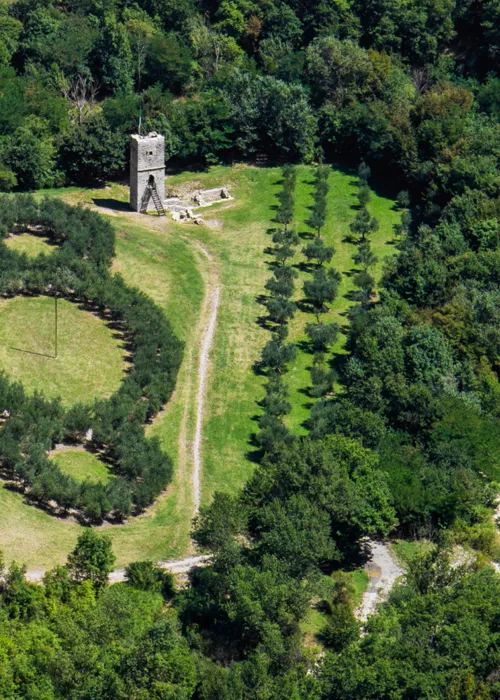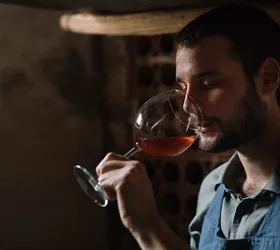At the Council of Trent, Pius V decided to build the Basilica of St Mary of the Angels, which was completed between 1569 and 1679. It incorporated the structures of the Franciscan monastery, erected close to the Portiuncula, in order to recognise the importance of the Minorite order of Franciscans and to welcome the pilgrims who still flock there today on the occasion of the Indulgence of Forgiveness (31 July-2 August), originally desired by St Francis.
The church, designed by Galeazzo Alessi and built by Giacomo Martelli, Giacomo Giorgetti and possibly Vignola, has three naves and a bell tower was built on the right side. However, the Basilica suffered severe damage during the 1832 earthquake, which is why Luigi Poletti rebuilt it, in the same form, between 1836 and 1840. The façade was raised in 1925-30, a statue of the 'Madonna of the Angels' by the sculptor Colasanti was placed on top. The current arrangement of the forecourt is due to the architect Nicolosi's 1950 design.
The interior of the Basilica is characterised by its side chapels, decorated with an organic collection of Umbrian paintings from the late 16th and early 17th century.
Of particular interest are the Portiuncula Chapel, built in the 10th-11th centuries and dedicated to St Mary of the Angels or St Mary of the Portiuncula, and the Chapel of the Transit, where St Francis died on 3 October 1226. The former is decorated with a fresco by Friedrich Overbeck from Lübeck, depicting 'St Francis implores from Jesus and Mary the granting of the Indulgence of Forgiveness', while the latter is decorated with frescoes by Domenico Bruschi and Spagna. Inside the Chapel of the Transit there is also a glazed terracotta statue by Andrea della Robbia.
From the sacristy you can reach the rose garden, a small garden planted exclusively with thornless roses. Next to it there is the Rose Garden Chapel (1518), consisting of three rooms decorated with frescoes by Tiberio d'Assisi, who also painted the wall frescoes of the Oratory of St Bonaventure (1506).
Finally, on the way out you can see the 15th-century cloister and what remains of the convent from the time of St Bernardine of Siena 15th century).



